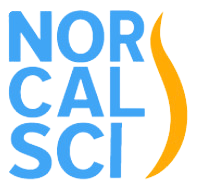High school students teaming up with the disabled to solve daily challenges
What happens when you mix a small group of high school students with a person with a physical disability? It’s a concept, now in its fourth year, that brings a diverse group of students together to help develop solutions for the participating disabled individuals that utilizes collaboration and design thinking.
The concept, Design The Future, is a one-week program held this summer at Stanford University (June 18-24) and UC Berkeley (June 25-July 1) that has drawn 55 high school students to the Stanford program and 30 to the Berkeley. It’s the brainchild of Durell Coleman, founder and CEO at DC Design, a social impact design firm. The consulting side of the firm engages with governments, businesses and non-profits to solve problems through human-centered designs. Durell launched Design The Future in 2015. A Stanford alumnus, his engineering and design background makes him uniquely qualified to run a program of this kind and his focus remains on enabling the participants have a role in designing solutions to problems associated with health and disability.
Students observe as Durell demonstrates the use of one of the many tools available during the program.
The remarkable part of this program is how groups of 4-6 students are paired with Project Partners, individuals with a disability who have an identifiable challenge that, hopefully, a mechanical design can help solve. The students in each group are composites of various skills. Not all necessarily have deep experiences or knowledge of design. Coaches (made up of current university students or alums) play an integral role in teaching and training the students in a variety of skills.
Right now, the program is seeking individuals with physical or sensory disabilities to participate. The individual may have an existing challenge where a known solution has not been identified. But even if you don’t have a known challenge, during an interview process with Durell and his team, such challenges may be identified. Sometimes, that may involve developing tools to help improve efficiencies beyond what one might presently be doing.
“We want to bring a diverse group of students together, not just the ones who have been designing robots and are well-versed in design and engineering work,” explains Durell. “The common unifying characteristics of the students is that they have a passion for improving the world,” he continues. To him, it’s critical that students understand human-centered design is not designing “for” but designing “with” other people. The students, especially at this level, also bring a different and new perspective to solving problems.
By the end of the one-week program, each group would develop a presentation for the solutions they designed and manufactured in collaboration with their Project Partner. Open sourcing of the solutions allows for scalability and availability of the product globally.
Programs will be held at Stanford University in collaboration with the Institute of Design at Stanford and at the University of California, Berkeley in collaboration with the Jacobs Institute for Design Innovation. If you have a physical or sensory disability and would like to work with high school students to build solutions to a problem you experience, they would like to hear from you. Project Partners will be compensated $500 upon completion of the week-long program. Send an e-mail with your interest to designthefuture@dcdesignltd.com.

